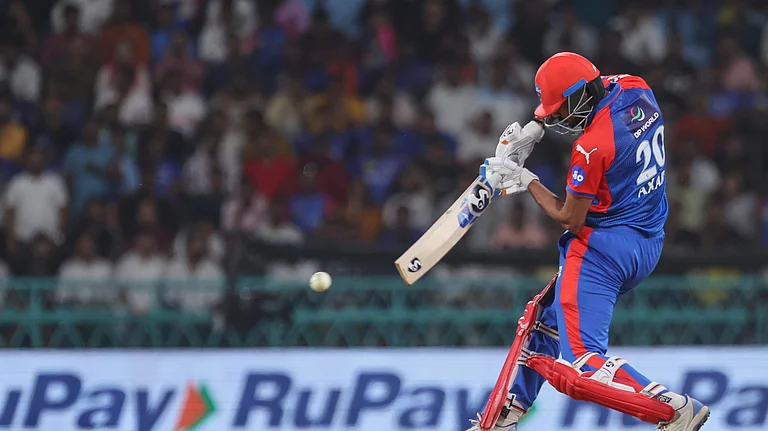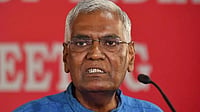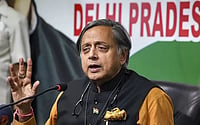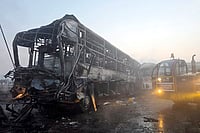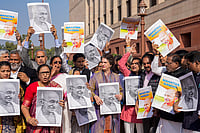WHEN the Sarkaria Commission, set up to study Centre-state relations in the '70s, recommended more autonomy and financial powers for states, it remained largely an exercise in futility. For years, the Commission's recommendations were not made public and when they were finally announced, they evoked little more than customary noises from parties opposed to the Congress. But by the time Atal Behari Vajpayee took oath last week as the first BJP Prime Minister, it was clear that the Commission's proposals, which had remained largely on paper, are now a full blown political agenda followed closely by regional parties which will determine the fate of the party at the Centre.
In the run-up to forming the Govern-ment, both the two major political formations, the left-of-centre and the Right wing, are looking desperately at regional powers—mainly from Tamil Nadu, Andhra Pradesh, Assam and Punjab. Even though the President has chosen to invite the BJP, it will seem a time in eternity until May 31 when the Government will have to prove its majority on the floor of Parliament. But as the newly-elected Prime Minister maintains: "There will be enough support from regional formations for us to prove our majority in the House."
Senior BJP members privately concede that the rise of regional parties and a federal structure has never been on the party's agenda—not even during its Jan Sangh days. "Federalism was never our point. We have always stood for a strong Centre. But things are now changing," argues a BJP ideologue. The same applied to Congress. "It is true that our party has always advocated a strong Centre," says former Congress minister Sitaram Kesri, regarded as the prime architect of the disastrous Congress-AIADMK poll alliance in Tamil Nadu.
The NF-LF combine, which comprises a host of regional formations, has kept its options open on the question of state autonomy. Primarily due to the well entrenched mass base of parties like the DMK, Asom Gana Parishad (AGP), the Telugu Desam and the Akalis, who have fared well in Punjab and are now demanding that their allies at the Centre dismiss the Congress government in Punjab. "The need of the hour is to give more powers to the state, some of whom have been neglected," says Janata Dal strongman Sharad Yadav.
In fact, some political scientists predict that the time of full scale federalism may well be on its way. Points out V.B. Singh, member of the Centre for Study of Developing Societies: "Central governments will now have to yield to pressure from states. In the absence of clear-cut solutions not only at the state level but also at the Centre, regional aspirations will have to be fulfilled." In his opinion, no regional party, including the Akali resolutions adopted at Anandpur Sahib, called for breaking away from the Indian Union. "Regional parties are as attached to the concept of the Indian Union as anybody else. It is nobody's point that they are harmful," he says.
As the 1996 election results show, poll verdicts in the states have been clearer than that at the Centre. This is largely attributed to the breakdown of the 'dominant party' system—in most cases the Congress—and its inability to absorb or contain the various movements and smaller groups. And as the BJP is now realising, the party discipline of a 'national' party does not leave much scope for such an accommodation in a typical parliamentary set-up. "The regional interest, therefore, demands articulation through regional parties,'' says Singh. Analysts also feel that political parties, which have successfully challenged the Congress party's monopoly, have also managed to create a 'clientele' of their own.
Take for example Tamil Nadu. In the '60s, the Congress was all powerful in the state under Kamraj, but it now occupies a secondary position in the state, primarily as an alliance partner. An alliance with the Congress had helped both the DMK and the AIADMK come to power in Tamil Nadu. But when the Congress tried to go it alone in 1989, it could win only 26 seats of a total assembly strength of 234. But in 1991, the Congress-AIADMK combine swept out the DMK—even though the latter had polled nearly 24 per cent of the total votes cast.
The same is the case in neighbouring Andhra Pradesh where the Congress has been at loggerheads with the Telugu Desam Party (TDP) since the early '80s. The TDP is an example of agressive regional nationalism. When N.T. Rama Rao first challenged the stranglehold of Rajiv Gandhi and his Congress, he galvanised the state with his call for Telugu nationalism. And what was the nationalism based on? The humiliation meted out to the then Congress Andhra chief minister T. Anjiah. NTR, proving that he was the original 'Telugu bidda ', took on the might of the all-powerful Congress on just one slogan: more power for Telugus and states. He became the first chief minister during the Congress years to openly demand financial powers at several National Development Council meetings.
Observers point out to another significant feature of south India's regional sat-raps—their welfare nets. In Tamil Nadu and Andhra Pradesh, the DMK and the TDP have religiously followed the mid-day meal scheme and have come out trumps, even at the cost of tremendous loss to state revenue. Similarly, prohibition, which started as a women-related issue in the south, has been adopted by Bansi Lal's Haryana Vikas Party, the BJP's coalition partner in Haryana. In the process, the South's powerful arrack lobby and the North's liquor barons have been humbled.
According to some political scientists, regional formations in some cases may have also altered their political perceptions. Mahesh Rangarajan, fellow at the Nehru Memorial library, points to the classic example of the AGP: starting off essentially as a party rallying against illegal immigrants—in Assam against Muslims—the party has come a long way and is perceived as a Left ally. In recent weeks, party chief and Chief Minister Prafulla Kumar Mahanta has expressed his willingness in talking not only to the Bodos but the Muslims as well. A far cry from the days when his government signed the Assam accord in 1985.
In the current scenario, therefore, one of the key questions likely to emerge will centre around the devolution of financial powers vis-a-vis the states. As things stand now, it is tilted heavily in favour of the Centre, which is entitled to 60 per cent of all state taxes. This, incidentally, is one of the main planks of the AGP, which is calling for a reduced share of its massive tea and oil stakes that go to the Centre. Similarly Kerala has no rubber production unit, even though it contributes several hundred crores annually to the central coffers. In Bihar, Laloo Yadav has repeatedly demanded that the coal cess levied on the state be either done away with altogether or reduced to the lowest minimum.
But even as the regional parties grow in strength, some analysts are apprehensive of the negative outcome of the phenomenon. According to details available with the Election Commission, for instance, the Maratha vote seems to have crystallised for the first time in Maharashtra with the BJP-Shiv Sena combine picking up 37 per cent of the total votes cast in the state. "It seems like a Maratha consolidation," says an offi-cial who went to one of the districts in the state as a poll observer. Much the same seems to be happening in Gujarat, even though there is no major regional party there. Observers say that this grouping is interestingly taking place in the industrially developed regions in the country.
As the 1996 polls indicate, some regional parties also have more leeway than even the national level ones. So in Punjab, the Akali Dal left one seat each for the NF and the BJP and had poll alliances with the Bahujan Samaj Party at Phillaur and Ferozepur, where BSP supremo Kanshi Ram managed to win a seat. Clearly, in such a scenario, the days of Indira Gandhi and Rajiv Gandhi, who propped up dummies to head state governments, seem to be over. The point to ponder, however, is whether the line dividing a regional and national party is getting more and more blurred.







